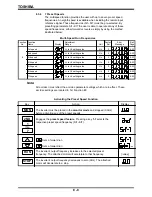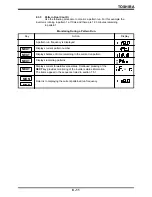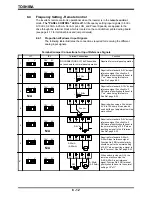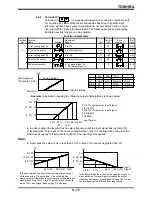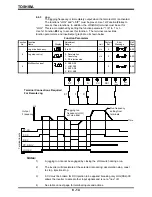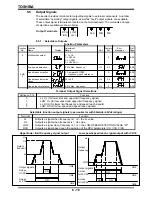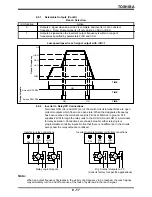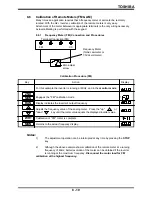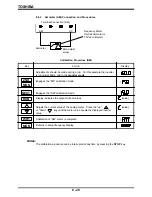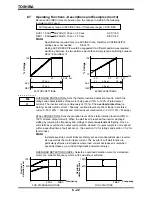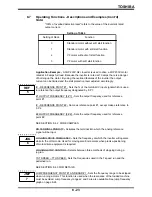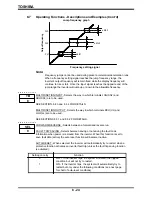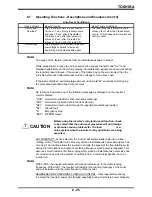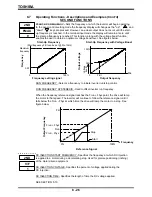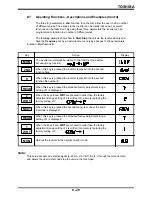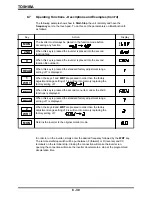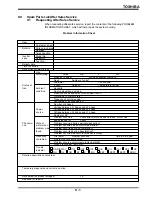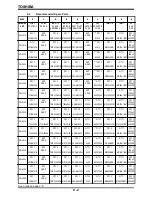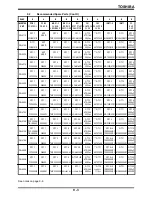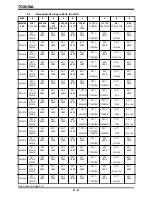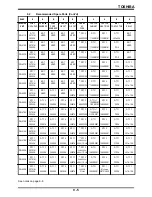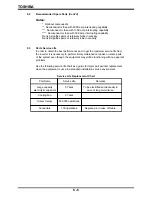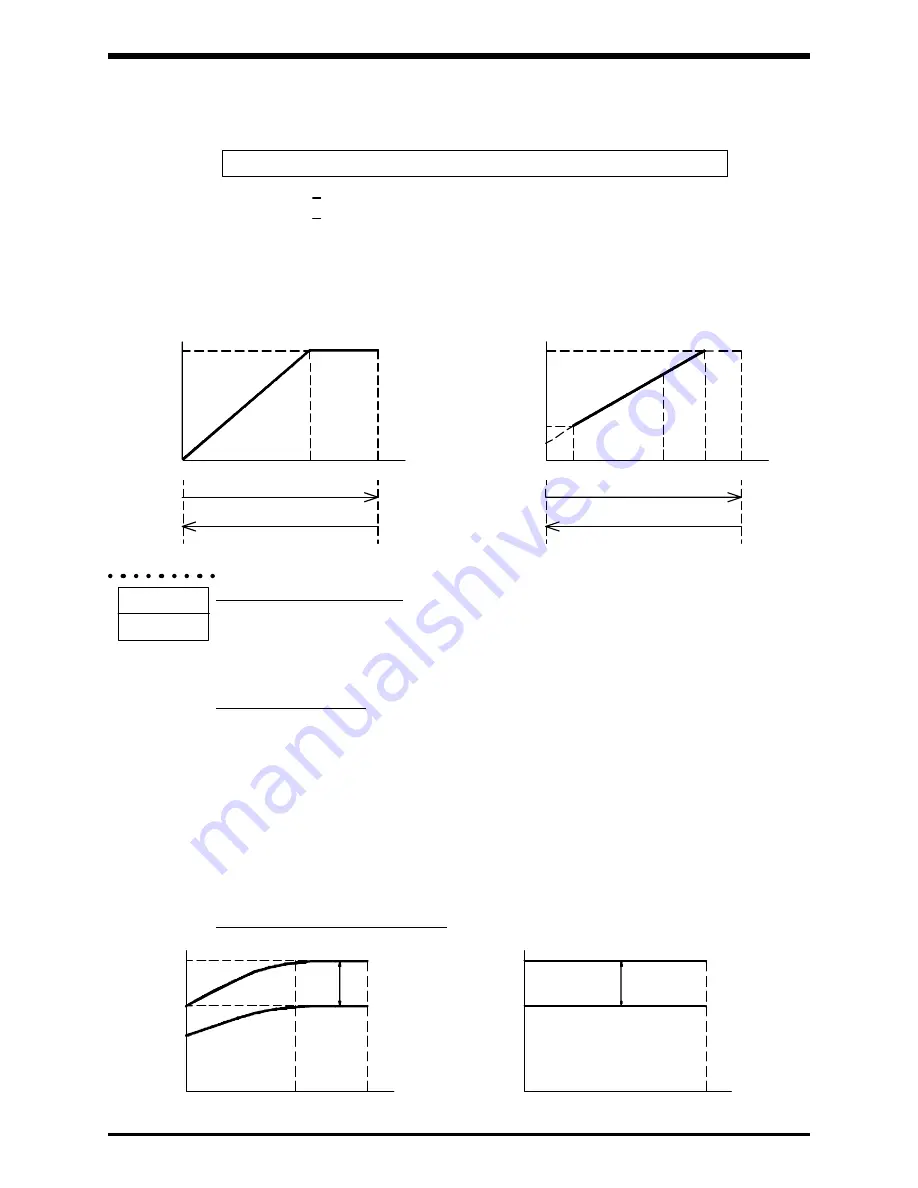
TOSHIBA
8.7
Operating Functions - Descriptions and Examples (Cont'd)
Because ACC/DEC times are based upon the change in Hz/SEC the following
formula must be used.
8 - 22
FH/Frequency range X (ACC/DEC time of frequency range) = ACC/DEC
ACC1 = 80Hz : (60-20Hz) X 30 sec. = 60 sec.
ACC1=60
DEC1 = 80Hz : (60-20Hz) X 10 sec. = 20 sec.
DEC1=20
80 UL, FH
60
ACC
DEC
10 sec.
ACC
DEC
20 sec.
20
LL
10
50
60
UL
100
FH
100
LL
10 sec.
60 sec.
Hz
Hz
% Voltage
% Voltage
Note:
Specifications required only one ACC/DEC rate, therefore ACC2/DEC2/Pt2
settings were not needed:
SEL2=0
Setting ACC2/DEC2/Pt2 would be suggested if a different pattern was required.
Switching between the two patterns would then simply require switching between
SEL2=0 and SEL2=1.
FACTORY SETTINGS
EXAMPLE SETTINGS
OL
OVERLOAD PROTECTION - Sets the thermal overload detection level to match the
ratings and characteristics of the motor being used (10% to 100% of rated output
current). The inverter will run continuously at 110% of the
overload protection
(i.e.
Setting: inverter rated current = 50amps, overload level set at 60% leads to set rated
current = 50 X 60% = 30amps and continuous set rated current = 30 X 110% = 33amps).
STALL PROTECTION - Sets the activation level of the stall protection function (90% to
150% of rated output current). When the stall level is reached the inverter will begin
stalling by lowering the frequency and voltage to prevent
overcurrent
tripping. Once a
soft stall has occurred the output current will be clocked. If output current is not reduced
within a specified time a fault will occur. (See section 3.0 for ratings and section 7.5.2 for
fault codes.)
Note:
Instantaneous trip current limits are factory set and are dependent upon inverter
size as well as the motor ripple current. The inverter's soft stall function is
particularly effective in situations where load current decreases as revolution
speed decreases (i.e. wind and hydraulic power machinery).
OVERLOAD DETECTION CURVE - Selects an overload detection curve for a standard
motor or a variable frequency motor, with and without soft stall.
4
FMAX
45Hz
FMAX
0
0
100%
60%
100%
60%
FOR STANDARD MOTORS
FOR VF MOTORS
Frequency
Frequency
Overload
detection level
Overload
detection level
Summary of Contents for TOSVERT-130G2+
Page 112: ...TOSHIBA 10 6 Schematics 10 17 ...

